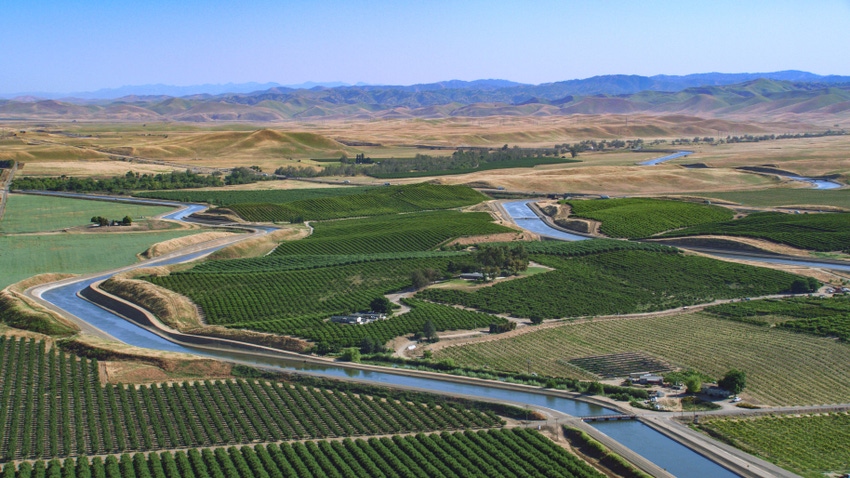
The U.S. Interior Department will install solar panels above irrigation canals in California, Oregon and Utah, aided by $19 million from a congressional spending bill.
Planned projects include a $15 million pilot with the University of California, Merced to deploy up to three floating solar technologies in the Delta-Mendota Canal to assess the viability, costs and benefits of floating photovoltaic units, according to the Bureau of Reclamation.
The agency will also spend $2.55 million for similar panels over the Main Canal of the Deschutes Project in Central Oregon and $1.5 million for panels above the Layton Canal in northern Utah.
The announcement pleased the San Joaquin Valley’s U.S. Rep. Jim Costa, who led an effort to include money for solar panels over conveyance facilities in stimulus legislation approved in 2022.
“Thanks to the Inflation Reduction Act, we are making groundbreaking investments to advance the integration of renewable energy into our water systems,” said Costa, a senior Democrat on the House Agriculture Committee. “I’m proud to have led this effort in Congress to build drought resilience across California. Innovative projects like this will power local homes and save water from evaporation annually.”
Multiple benefits
Interior officials say installing solar panels over canals could bring a variety of benefits, including:
Generating renewable energy.
Reducing evaporation losses of the canal.
Increasing efficiency of and production from solar panels because of the cooling effect of the water beneath the panels.
Creating land savings for open space and agricultural use.
Reducing facility maintenance by mitigating algae and/or aquatic plant growth.
Reducing the energy footprint and carbon emissions required to operate and maintain the facility.
The projects follow a 2021 UC study showing that covering California’s roughly 4,000 miles of public water delivery infrastructure with solar panels could help the state save water, energy and money.
The study projected a savings of up to 63 billion gallons of water annually – enough to irrigate 50,000 acres of farmland or meet the residential water needs of more than 2 million people, according to UC Merced.
The Delta-Mendota project will complement work that California is already doing with UC Merced, the Turlock Irrigation District and Solar AquaGrid to install solar panels over two spans of TID canals.
“It’s exciting to see research become reality through projects such as these, which have so much potential,” said UC Merced project scientist Brandi McKuin, who led the initial study.
In December, Interior announced it would install solar panels over the Casa Blanca Canal south of Phoenix, which serves the Gila River Indian Community, at a cost of $5.65 million.
Spending initiatives
The solar projects are among myriad election-year spending initiatives related to water in the West. Separately, Interior in mid-April set aside $29.7 million to help states in the Upper Colorado River Basin – Colorado, Utah, Wyoming and New Mexico – with drought planning. This is the second year of funding from the 2021 Bipartisan Infrastructure Law.
Interior officials say the latest round of funding will help them re-activate and install up to 60 stream gages that are in critical reaches of the basin. New weather station networks and monitoring technology will improve the accuracy and confidence in managing water resources, officials said.
The Colorado River Basin provides water for more than 40 million people and 5.5 million acres of agriculture in seven U.S. states as well as to 30 tribal nations and two states in Mexico. Despite improved hydrology in recent months, the historic 23-year drought has led to record low water levels in Lake Powell and Lake Mead.
Read more about:
SolarAbout the Author(s)
You May Also Like






